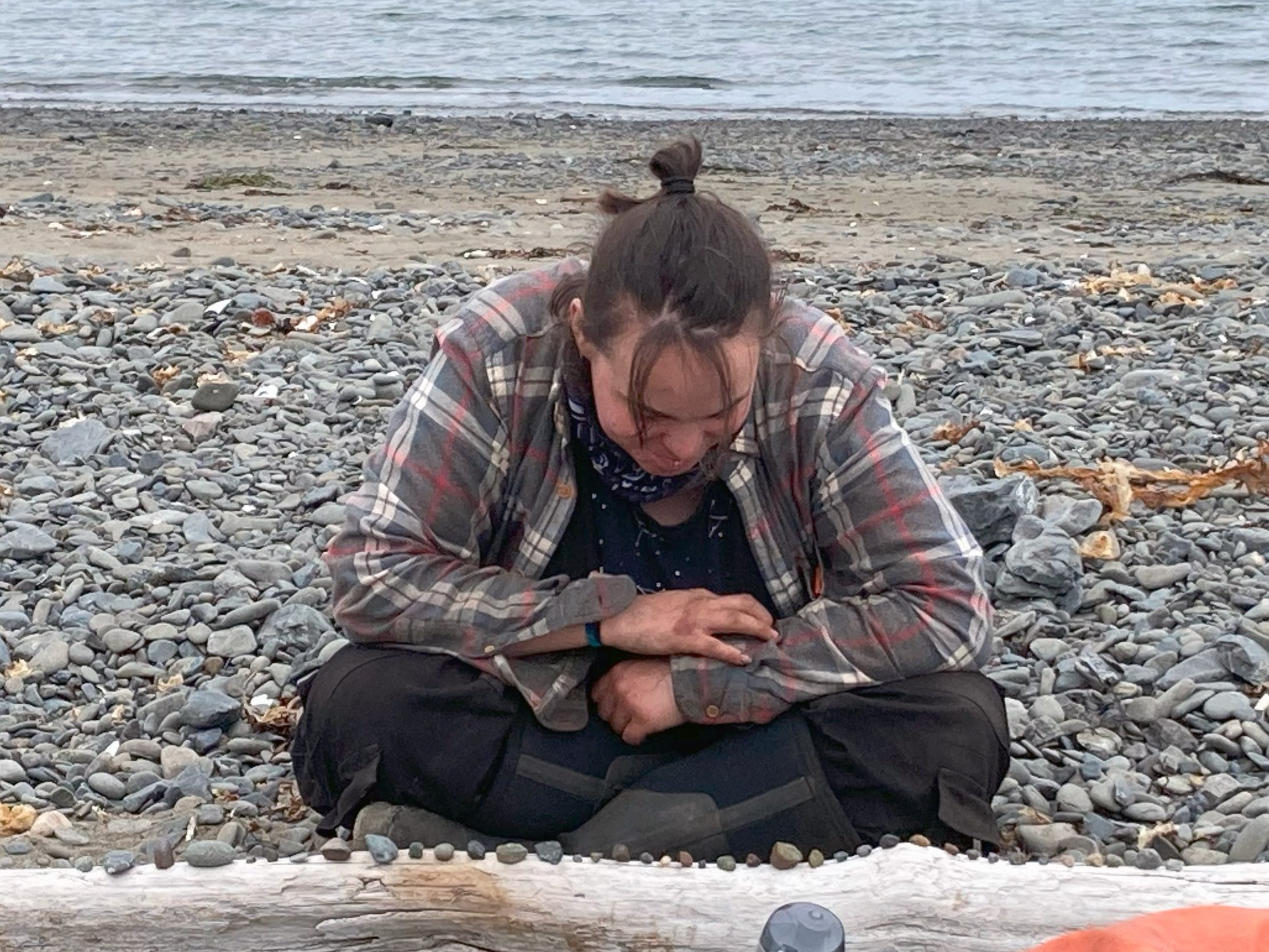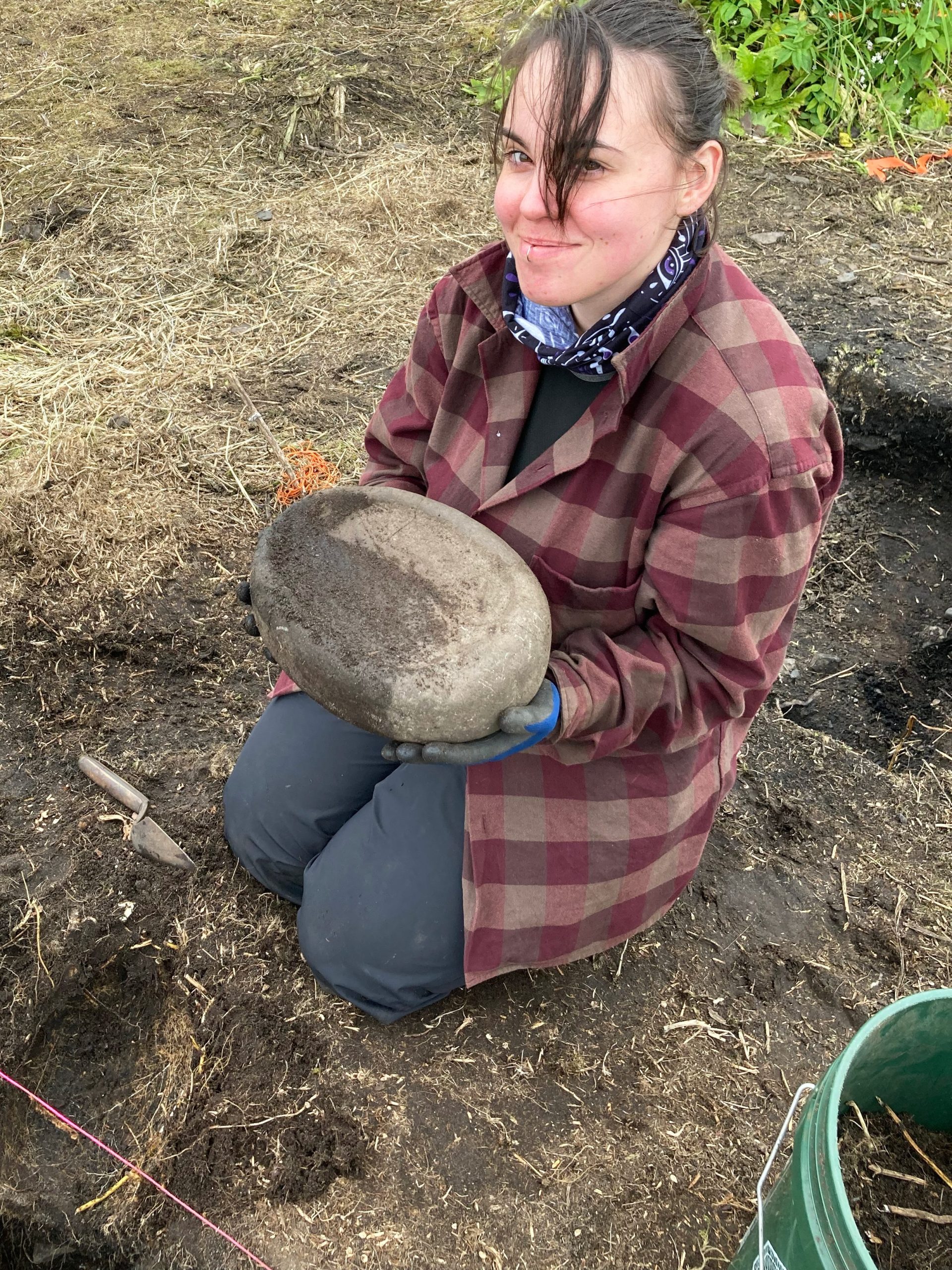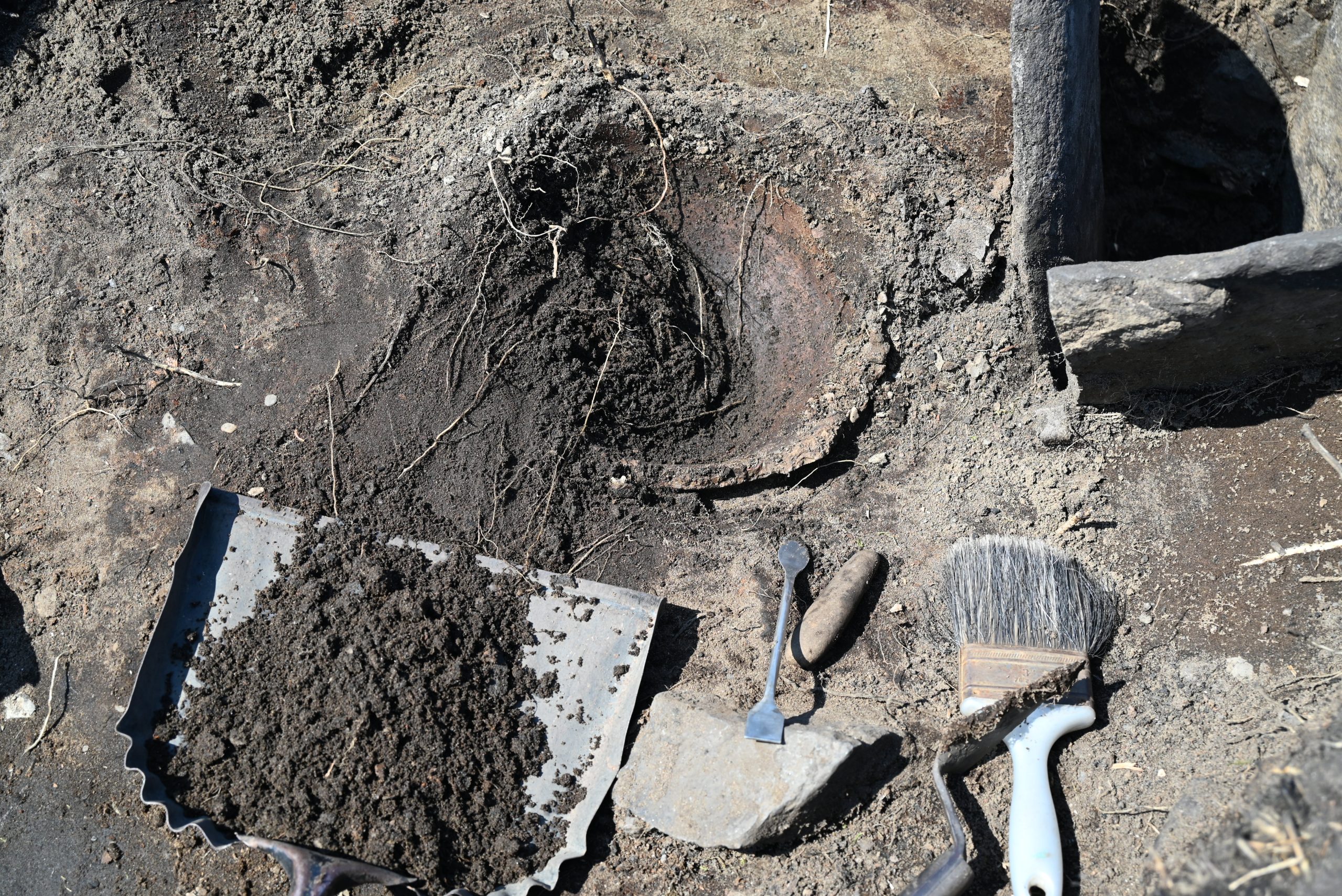
What is archaeology, and what do archaeologists do?
I don’t often get this question outright. Instead, when I say “I’m an archaeology student!”, people tend to reply something like, “Oh, cool!” They nod, and then tell me about a video they watched on dinosaurs or fossil collections, or tell me about a cool rock they found recently. I do love fossils, and I will always share your excitement over finding a cool rock! But neither is the main concern of “archaeology”.
In Scotland, where I studied for my undergraduate degree, archaeology was very public-facing, and many people had first-hand knowledge of archaeological digs that were undertaken in their hometown or wider area. Additionally, local treasure hunters equipped with metal detectors are required to work with an archaeologist so they know which finds they can just keep, and which finds they should have professionally excavated. Programs such as this strengthen the bond between the public and archaeologists. While living in Scotland, I thought it was a myth that folks thought archaeologists dig up dinosaurs – but I was wrong! Since I started graduate school in the US, I’ve gotten this implicit question a bunch of times.
So, if archaeologists don’t primarily deal with dinosaurs, fossils, or rocks, what are they interested in?
Archaeologists are, broadly speaking, interested in the human past. But even this simple statement creates some problems: What do we mean by “the past”, and what do we mean by “human”? And how do archaeologists actually investigate this past?
What is “the past” in archaeology?
It might seem straightforward at first – but when does the past begin and when does it end? Since I’ll talk more about the beginning of “the past” in the next section, let’s focus on the end here.
When does the past end? Technically, yesterday is the past, but you wouldn’t want an archaeologists digging through your things that you didn’t put away yesterday, would you? So how do we draw the line? It depends! There are archaeologists working on contemporary contexts, even – things that were amassed over the last couple of years. For instance, Jason de Leon’s project on the Southern US border is interested in the way migrant crossings leave traces in the landscape – humans went through here, and we may not always be able to tell their stories for concern of their safety. But looking at the traces that were left behind, we can tell a good bit about their journey. This is archaeology, too, though some more orthodox archaeologists might be skeptical! Similarly, Bill Rathje had a famous project called “Garbology” where he looked at trash that people left behind; comparing the actual consumption with what people indicated they consumed. The past doesn’t need to be “ancient” to count as archaeological.
You may have noticed that in these examples, archaeologists looked at things and traces left behind by people to understand these people’s behavior. That’s a key element of archaeology. We look at things and traces, left behind by people in the past (even if this past was quite recent!). Most archaeologists work on things and traces that are further away in the past, sometimes thousands and hundreds of thousands of years ago (or even millions of years).
Why is ‘human’ a questionable category in archaeology?
Again, this feels quite straightforward, doesn’t it? But again, not quite. When does our human past start? You may say when Homo Sapiens first came around. But when, really, was that? How could we even know? Homo Sapiens didn’t appear out of nowhere in one day, after all. And what about our close relatives? You may know that we have quite a few genes from other hominin (human ancestors and relatives) species! (I shall talk about the myth of extinction another time.) So where do we draw the line between human and non-human hominins or even hominids (including apes)?
In my introductory classes, I often ask students how old they think the oldest stone tools are – meaning stones that were definitely chipped in an intentional manner. I get a variety of answers, ranging from a few thousands years to the millions (especially as I signal them to up their numbers!). Indeed, the oldest stone tools we currently know of are over 3 million years old! They are from Lomekwi in modern Kenya. We think that human ancestors actually used stone tools before then – because there are some bones with cut marks that are even older. You see that the question of “the human” and the starting point of archaeology depends a bit on your interest, but most archaeologists would agree that once you have tools intentionally made by hominins, we’re definitely in the territory of archaeology. (That is indeed after the dinosaurs!)

What do archaeologists do?
What I love about archaeology is that you can do almost anything within this broad discipline!
Do you love math and statistics? Great, you can become an archaeologist! Some archaeologists look closely at patterns that can be proven statistically. Oh, you’re terrible at math, but you enjoy art? Great, you can become an archaeologist! You can specialize on art objects from the past, such as old gold vessels from Central Europe. You’re more of a STEM person? Great, you can become an archaeologist! There are many archaeologists that work in the lab, doing things like isotopic analysis, pollen analysis (palynology), or radiocarbon dating. You’re more of the outdoorsy type, not wanting to be cooped up in the lab or some museum basement? Great, you can become an archaeologist! There is a whole career path where you focus on excavation and survey, spending a lot of time outdoors.
I could extend this list endlessly! Point being, figuring out how people lived in the past takes a whole team of people working together and all bringing their different skills to the table. If anything, archaeology is a team sport (contrary to what Indiana Jones told you).
Don’t archaeologists dig up stuff?
A big part of archaeology is excavation, but it’s not as big as you might think. Most archaeology students learn how to excavate, and it’s an important part of your education. Why? Because it helps you understand how the past is physically present – and how tough it can be to interpret! It also helps to understand that the past can best be understood if we combine different aspects of evidence.
For example, if we find a broken pot by itself, that may be harder to interpret than if we find a whole housefloor full of broken pots. We often call this an assemblage; meaning things that belong to the same context in the past. This helps interpretation tremendously, and is one of the reasons why looting is destroying a lot of evidence that archaeologists would want to collect. Knowing the context of an object is basically just as important as the object itself. Many archaeologists do excavate regularly – either as part of their professional career outside of academia, or as part of research projects through universities, but there are plenty of specializations where folks don’t excavate – for a variety of reasons.
If you’re interested, I’ll talk more about the kinds of careers archaeologists might pursue, why excavation is both important and undertaken less these days, and what kinds of terms we like to throw around (like “assemblage”) in another post.
Did any of this surprise you? What other questions do you have? Please comment!
x A

Leave a Reply